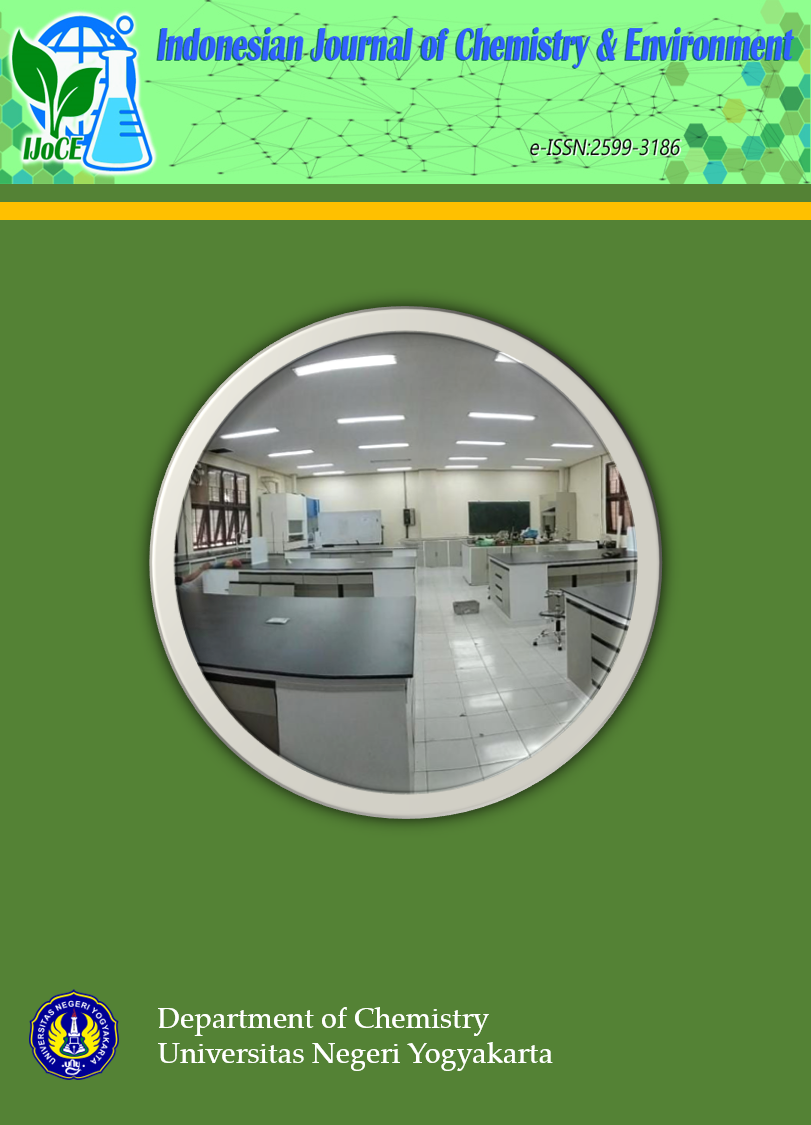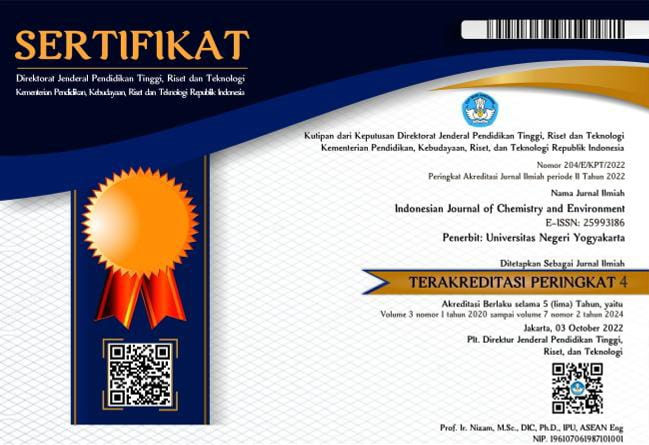Treatment of Industrial Wastewater and Household Waste Using Electrocoagulation Method with Aluminum Electrode
DOI:
https://doi.org/10.21831/ijoce.v5i2.58394Abstract
The treatment of industrial wastewater and household waste using the electrocoagulation method with aluminum electrodes aims to determine the optimal time and voltage to reduce iron content, manganese content, and TDS from industrial wastewater and household waste. The method used in this study was the electrocoagulation method with aluminum electrodes. The object of this research was the reduction of iron content, manganese content and TDS of industrial wastewater and household waste. The optimization test of electric voltage and electrocoagulation time was carried out at variations of electric voltage of 5, 10, and 15 volts and time variations of 1, 3, 6, 9, and 12 hours. Then the samples were analyzed using Atomic Absorption Spectroscopy (AAS), pH meter and TDS meter. The results showed that the optimal time and voltage to reduce iron content, manganese content, and TDS of industrial wastewater and household waste was 12 hours and 15 volts. After the electrocoagulation process, the iron content was reduced by 95.37%, the manganese content was reduced by 100%, the TDS value was reduced by 43.66%, and the pH value increased by 26.73%.
Downloads
Published
How to Cite
Issue
Section
Citation Check
License
Authors who publish with this journal agree to the following terms:
- Authors retain copyright under a Creative Commons Attribution–ShareAlike License (CC BY SA) that allows others to share: copy, and redistribute the material in any medium or format, Adapt: remix, transform, and build upon the material, for any purpose, even commercially.
- Authors are able to enter into separate, additional contractual arrangements for the non-exclusive distribution of the journal's published version of the work (e.g., post it to an institutional repository or publish it in a book), with an acknowledgement of its initial publication in this journal.
- Authors are permitted and encouraged to post their work online (e.g., in institutional repositories or on their website) prior to and during the submission process, as it can lead to productive exchanges, as well as earlier and greater citation of published work.










